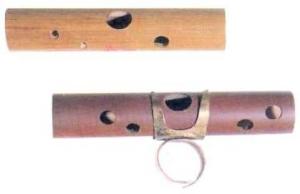Classification of flutes
Mouth flute, a bamboo musical instrument, originated in the Yellow Emperor period. It was invented by Mr. Yu Xunfa, a bamboo flute player, in early 1971.

Later, in order to increase the range of the two-hole mouth flute, Yu Xunfa added three more finger holes, thus successfully developing the five-hole mouth flute. There are also many people who have improved the mouth flute. Some have added openings to facilitate transposition or increase the range of sound. Some have improved the size of the finger hole to reduce the half-hole fingering, and some have used different materials to make the mouth flute. These improvements continue to enrich. The expressiveness of the mouth flute includes the two-hole mouth flute, the five-hole mouth flute, the seven-hole mouth flute, the scale mouth flute and the Ding flute.
The tone of the flute is bright, high-pitched, similar to a whistle, and has strong penetrating power. It is especially suitable for expressing beautiful melodies and lively and lively cheerful tunes, and can vividly imitate the singing of birds and human voices. In ethnic bands, it is often used to play cadenza, which can be used for solo, ensemble or accompaniment. In addition, it can participate in the ensemble of Western orchestras, and it is a colorful instrument with unique effects.
 渝公网安备 50010702504639号
渝公网安备 50010702504639号